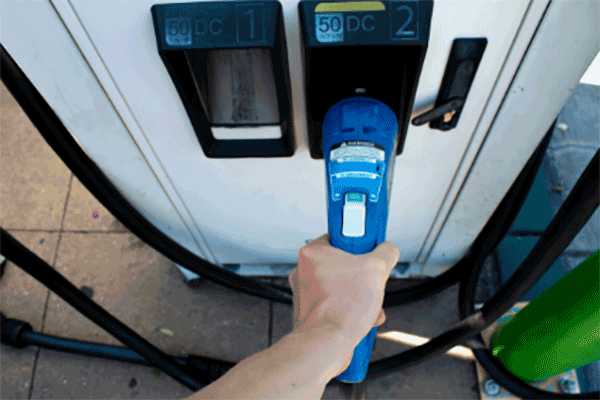As an electric vehicle (EV) owner, you’ve made a responsible choice for a more sustainable mode of transportation. Ensuring safe and efficient charging is an essential aspect of your EV ownership experience. In this guide, we will provide practical tips on electric vehicle charging safety to help you keep your EV running smoothly and securely.

Select the Right Charging Equipment for Your EV
It’s important to choose the appropriate charging equipment to meet your needs. There are three main types of charging stations: Level 1, Level 2, and DC fast chargers. Each type varies in charging speed and power requirements. For home use, Level 1 or Level 2 chargers are typically recommended, while DC fast chargers are more suitable for public charging networks.
Regularly Inspect Your EV Charging Station To maintain safety
It’s crucial to examine your EV charging station periodically for any signs of wear or damage. Look for loose connections, frayed cables, and damaged components. Make sure the station is properly grounded. If you identify any issues, consult a professional electrician or technician for assistance.
Adhere to Your EV Manufacturer’s Guidelines
Always follow the manufacturer’s guidelines for your specific EV model and charging equipment. This includes adhering to recommendations on the maximum charging rate, charging duration, and proper maintenance procedures. Ignoring these guidelines may result in decreased efficiency, potential damage to your vehicle, and safety hazards.
Be Cautious of Weather Conditions
Extreme weather conditions can impact the safety and efficiency of your EV charging. In hot temperatures, ensure that your charging station is well-ventilated and shaded to avoid overheating. In colder climates, consider using a dedicated EV charging station with proper insulation and temperature control features.
Practice Proper Cable Management
Effective cable management is key to preventing potential hazards. Avoid placing charging cables in high-traffic areas and always store them neatly when not in use. Regularly inspect cables for signs of wear or damage, and replace them as necessary.
Prevent Electrical Circuit Overloading
To avoid overloading electrical circuits and potential fires, connect your EV charging station to a dedicated circuit. Work with a licensed electrician to determine the appropriate circuit size and breaker capacity for your specific charging needs.
As an EV owner, prioritizing electric vehicle charging safety is crucial. By following these tips and remaining vigilant about proper maintenance, you can maximize the benefits of electric vehicle ownership while minimizing potential risks. Remember that your safety and the safety of those around you should always be at the forefront when it comes to EV charging.














